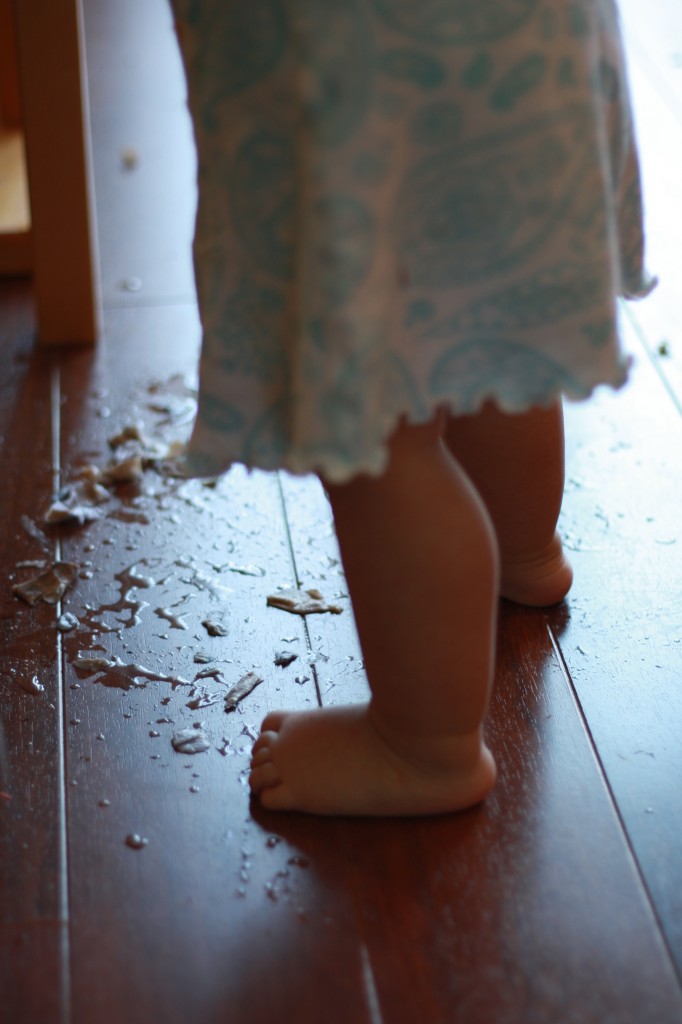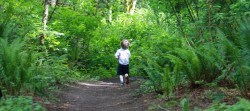A few weeks ago, I was trolling the aisles of our local thrift store, when I discovered a $3 bargain. A lovely paper-making kit – obviously never used. Sure, it looked to be a number of years old, but the process of paper making hasn’t changed much recently, has it? Anyways, I picked it up, and knew it would be a blast.
My son is only 3 1/2, so I was wondering if it would be a little old for him. But, we decided to try anyways. Turns out, my baby loved it, too!
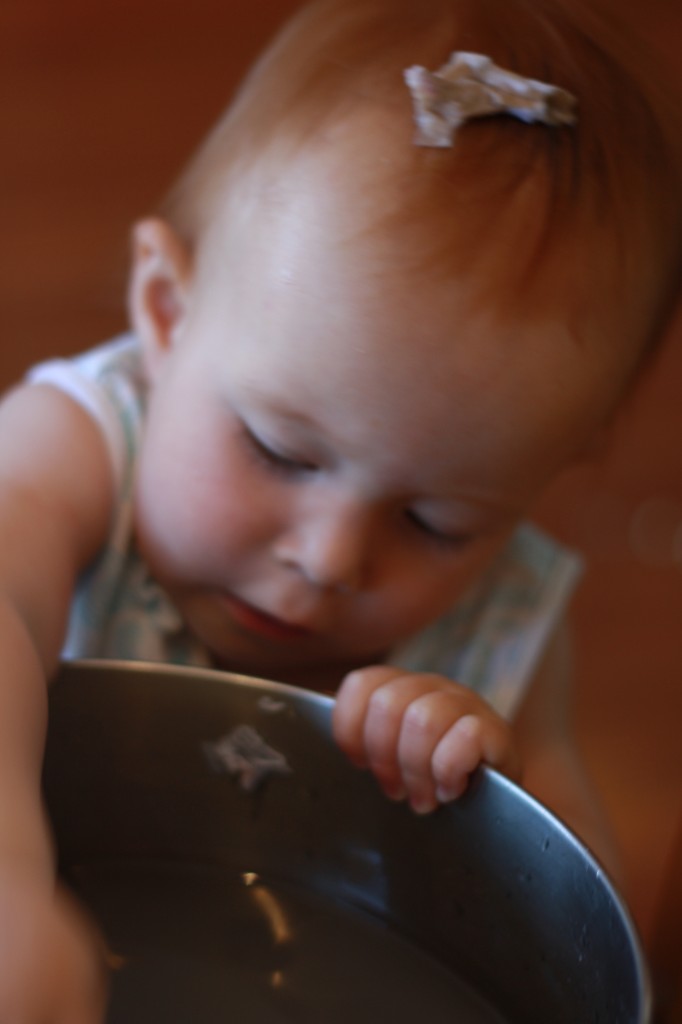
Paper making is easy. All you need is paper (yes, a little redundant to make paper out of paper, but that’s recycling for you!), water, a wire screen and a place to lay out the finished project.
- Tear the paper into little squares (about the size of postage stamps). This is a great exercise in both patience, and endurance. But, it can be fun, especially if you’ve got some steam to burn off.
- Mix your paper with water (just covering your torn paper works fine, as you can add more water if needed later).
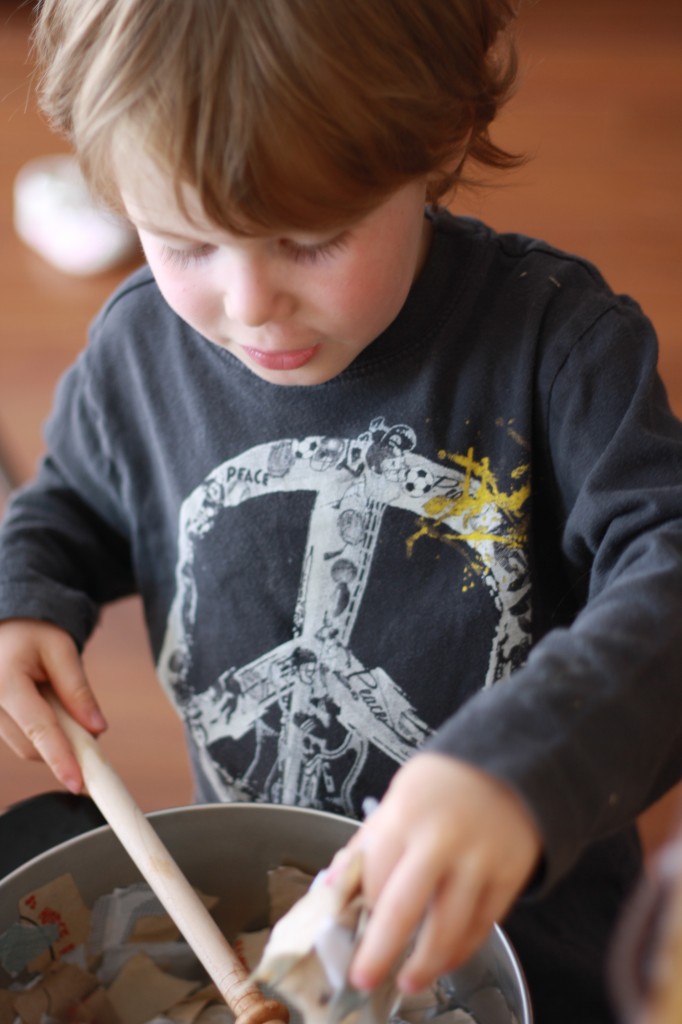
- Using a blender (in our case, a hand blender, but whatever you’ve got works just fine) grind the paper into a fine pulp. This was my son’s favorite part!
- Get out the wire screen. This looks easy enough to make with a sheet of fine wire, laid into a wood frame (an empty picture frame would work like a charm).
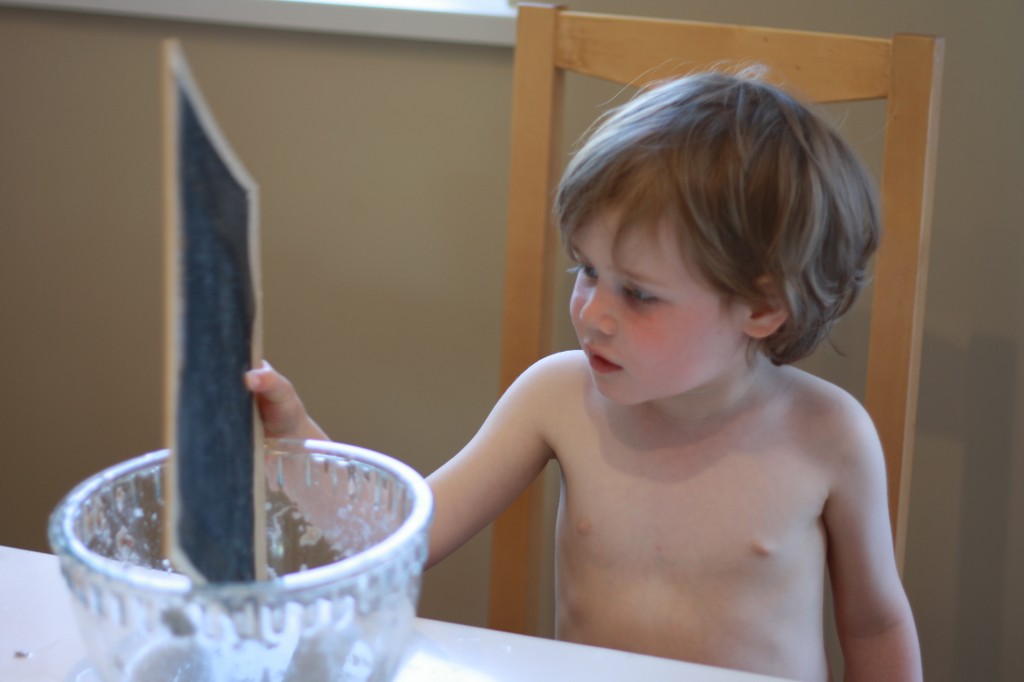
- Pour the pulpy mixture onto the screen (over a bucket/bowl to catch the extra water), and squeeze out the moisture, smoothing it “paper thin.”
- Take the screen and paper out of the frame (this can be a bit tricky), and place it gently onto a drying rack (i.e. a piece of plywood).
- Finally, peel the wire off the paper, and let the paper dry!
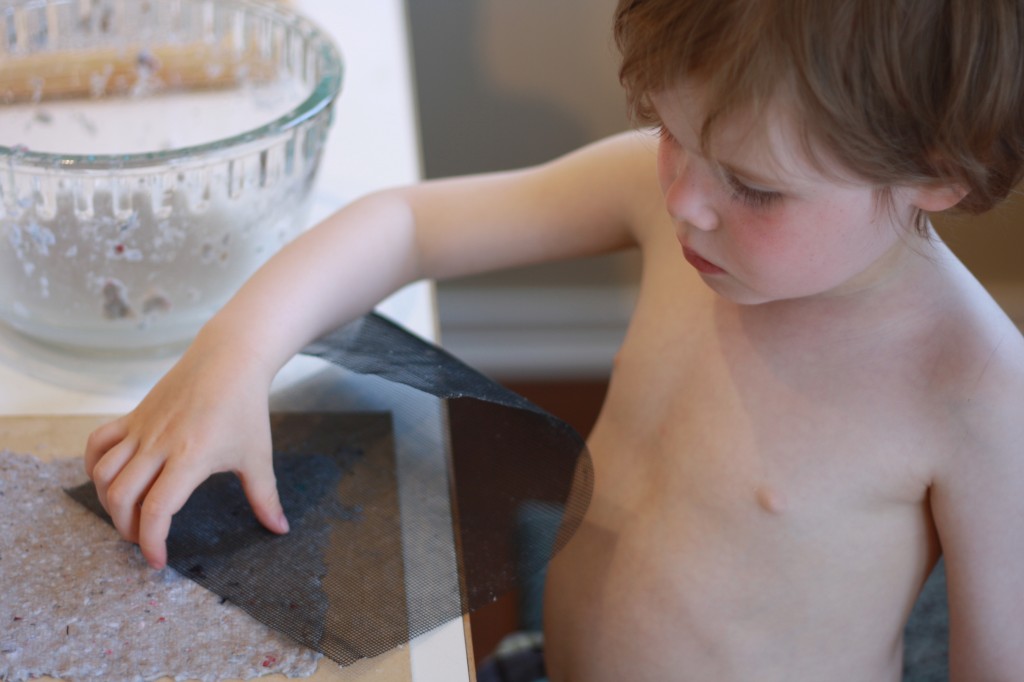
The whole process is delightfully mucky and multi-sensory. It’s art and science and history all mixed into one delightful soup.
This week, we went to the farmer’s market, and were given a handmade paper bookmark, with seeds buried in it. Perfect for planting in the garden. We were very inspired to try this technique with our next paper making session.
Taking the project to the next level, you could easily incorporate all of your activities surrounding the garden, planting, earthworms, recycling, and conservation. Or, you could use papermaking as an introduction to a greater study on paper use in history (papyrus, paper shortages during wartimes, illuminated manuscripts…), or visiting a printing press, or pulp & paper mill. Or try making art cards for family members, or a community outreach program.
